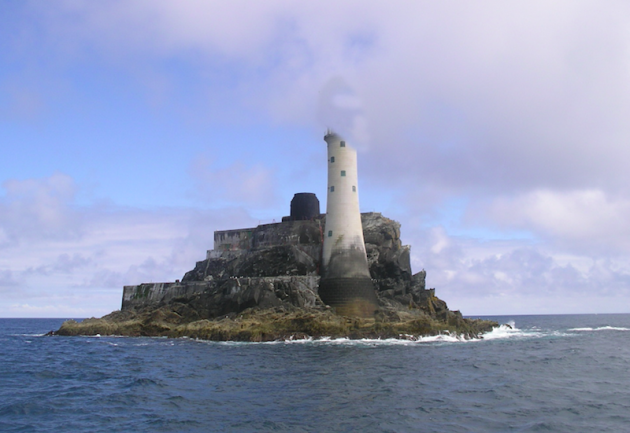A brief history of some of the best sailing April Fool's jokes - and their consequences
According to a long and much-loved tradition, websites and magazines run spoof stories once a year. It’s the April Fool’s Day piece, little more than an excuse for a classic wind-up to be enjoyed as much, if not more, by the publisher as the reader.
The best spoof stories tread a fine line: they have to seem utterly ludicrous and simultaneously feasible. Inevitably, the oldest jokes are the best because in retrospect they often glisten with the lustrous irony of having actually come to pass.
One of the best remembered of yore was written by the late Bill Beavis and published in the long-defunct Yachting and Boating Weekly. It announced the existence of the polyestermite, an insect not unlike the gribble, which wormed its way into glassfibre boats and destroyed them.
When the story was published, Beavis was contacted by several serious research establishments wishing to know more about the polyestermite. Ironically, the epoxy-eating insect preceded osmosis, which has afflicted generations of glassfibre boats, so in a way the news was before its day.
The latest twist to this story is scientists now believe they have discovered a termite that consumes non-biodegradable waste so ultimately – who knows – the creature once christened the polyestermite could end the growing problem of valueless plastic hulks, or what are now called ‘end of life hulls’.
Des Sleightholme, former Editor of Yachting Monthly, invented the water-ballasted anchor, which he named the Rolla Anchor. His spoof write up included the telephone number of the magazines’s art editor, who was besieged by chandlers and individuals wanting to know where they could buy one of these clever lightweight devices.
Another joke piece involved a yacht equipped with automatic reefing, steering, collision avoidance systems and CCTV, which had been programmed to sail from Brighton to Deauville. Ostensibly, it never arrived in France because someone had mistyped the destination and it was said to have been found eventually in Deanville, on the US East Coast. Way back when, the idea seemed absurdly futuristic way. Not so today.
In the Nineties, Yachting World reported that the Fastnet Rock lighthouse (pictured above) was to be been demolished and a 500m no-sail exclusion zone had been imposed around it. We quoted eminent Irish geologist Professor Phil O’Roap, who revealed that a question hung over the future of the light as it ‘was deemed not to conform to EC standards for offshore rocks’.
To illustrate this, a photo of the razed landmark was used (it was early days for PhotoShop so it looked real). It wasn’t the most hilarious spoof ever and the best bit of the joke was when the Swiss Ocean Racing Club phoned asking for permission to re-use this shocking scoop.
Most of these jokes have had repercussions when taken seriously. One of the best examples was in Motor Boat & Yachting in 2001, when the Editor wrote about a new 47ft flat pack trawler boat being sold by IKEA, the Smegbårj.
He quoted IKEA spokesman Bjorn Yestürdey, who said a keen DIYer with two Allen keys ‘could assemble the Smegbårj in a matter of months’. The boat’s main feature was clever floor to ceiling shelving. It was priced £99.95 ‘including two free pine CD racks’.
IKEA’s brand police were somehow alerted to the news article and they were none too pleased. In a moment of malicious humour, the publisher decided to give MB&Y’s Editor a taste of his own medicine and sent him a spoof letter purporting to be from solicitors Almquist, Bjorkman, Backstedt & Andersson and threatening legal action. It was some time before the editor worked out the legal firm’s acronym and got the joke himself.
As for the 47ft flat pack trawler yacht, we are still waiting for it, just as we are waiting for the water-ballasted anchor, but the funny thing is neither of them are completely beyond the bounds of reality. Or are they?




